Late-summer borders need some vibrant colours and lush foliage in the mix of planting to catch the glow of September sun. September is when many plants experience a final flourish before dying down for the rest of the season. Long-flowering, hard working plants are ideal so the colours last well into autumn.
These are our top recommended September flowers and plants for the borders, chosen by head gardener Tom Brown (TB), head gardener Mat Reese (MR) and nurserywoman Fleur van Zonneveld (FvZ).
Read our piece on where to catch them in bloom here.
More on September in the garden
The best September flowers and plants for late-summer colour
Fuchsia hatschbachii

This graceful fuchsia will make a wonderful, lush shrub for the garden. It has relatively large, glossy green, willow-like leaves and bushy, copper stems. Its hummingbird-pollinated flowers are slimmer than those of Fuchsia magellanica, but otherwise look similar. The flowers are produced on the tips of the current season’s growth.
Ideally, plant in a sheltered position and cut back hard in the spring to promote strong, arching shoots that will show off the flowers and foliage to their best throughout September and autumn. Feed periodically through the summer and treat for capsid bugs to ensure a good display of September flowers which bloom into October. MR
Height 2m. Origin Brazil. Conditions Good soil; sun or part shade. Hardiness RHS H2, USDA 8a-11. Season Summer to autumn.
Read our plant profile guide to fuchsia.
Here are the best climbing plants to grow
Cleome Señorita Rosalita (= 'Inncleosr')

A fabulous, dense hybrid with typical spidery, rose-pink flowers and exotic-looking, dark-green, palmate leaves. Usefully, the flowers are sterile, so the energy that would have been spent on seed production goes into making a continuous string of flowers; this one is thornless too. Cleomes do best in a warm, sunny position. Incorporate humus on planting and feed through the growing season as they are hungry plants. It is a lovely alternative to the cosmos, salvias and dahlias normally seen in late-summer bedding. MR
Height 80cm. Origin Garden origin. Conditions Good moist soil; full sun. Hardiness RHS H1b, USDA 9a-10b. Season Summer to autumn.
Phlomis leucophracta

The remarkable foliage of this stunning species is covered in a thick coating of golden felt, which makes the strongest impression on the margins of the new and slightly corrugated foliage. Growing this plant hard, in full sun on very free-draining soil will encourage the foliage to really colour up and will also keep the plant compact. The flowers are a forgettable brown yellow and are great September flowers. MR
Height 1.2m. Origin Turkey. Conditions Best in poor, stony soil; full sun. Hardiness RHS H4, USDA 4a-10b. Season Year round.
Kniphofia rooperi

From a huge nest of fresh-green leaves, strong flower spikes, are produced, each bearing a rather fat torch lily flower that is almost as wide as it is long. The flowers start orange-red and age to yellow and are produced well into October and autumn creating a magnificent floral full stop to summer. It was used very effectively at Great Dixter when combined with Cortaderia selloana ‘Pumila’, but would work well with grasses or larger, new-world salvias. Position carefully as plants reach nearly a metre wide and resent disturbance. Plant in good soil and tidy the old leaves in spring. MR
Height 2m. Origin South Africa. Conditions Good, rich soil; full sun. Hardiness RHS H5, USDA 7a-10b. Season Late summer to autumn.
Read our plant profile guide to kniphofia
Phlox paniculata 'Herbstwalzer'

This useful, late-flowering form is at its best in September and it will sometimes continue to bloom into October. It produces large panicles of bold, pink flowers with a darker pink eye on strong stems, and is a useful antidote to the prevailing late-season autumn yellows. Phlox thrive in well-nourished, acidic soil and resent periods of extended drought. In spring, feed the crowns with good compost and protect young shoots from forget-me-nots and the like, as this is the stage that they begrudge competition. MR
Height 1.2m. Origin Garden origin. Conditions A good garden soil and not chalk; full sun to part shade. Hardiness USDA 4a-8b. Season Summer to autumn.
Rudbeckia hirta 'Cappuccino'

Rudbeckia hirta ‘Cappuccino’ is a fabulous rudbeckia that will make sturdy branching plants and will flower throughout the summer into autumn until colder days draw the show to a close. The huge daisy flowers are dark mahogany in the centre, bleeding to an amber yellow, and look absolutely divine in the soft autumnal sunshine, or cut for the house. Each flower will last for weeks and deadheading will help to keep the show clean and encourage more blooms. These are vigorous and greedy plants, it is important to feed the soil with good compost when planting and with fertiliser into autumn. MR
Height 1m. Origin Garden origin. Conditions Any rich soil that is not saturated; full sun. Hardiness RHS H3, USDA 3a-8b. Season Summer to autumn.
Read our guide to growing rudbeckia.
Hesperantha coccinea 'Major'

Star-shaped, clear-red flowers are produced on gladiolus-like stems and held just above the thin, sword-shaped foliage. Crimson flag lilies hail from South Africa, so you might imagine they’re sun-loving, drought-tolerant geophytes. Sun-loving, yes, but they resolutely resent drought and will perform best in moist soils, and can even be used as marginal plants for ponds. They do especially well in Cornish gardens, and the west coast of Scotland. Plant these September flowers in rich soil and split every couple of years to promote vigour and maintain flower production. MR
Height 50cm. Origin Garden origin. Conditions Good moist soil that doesn’t dry out for long periods; full sun. Hardiness RHS H4, USDA 7a-9b. Season Late summer to autumn.
Here's our guide to growing hesperantha
Helianthus 'Carine'

Graham Stuart Thomas once commented that he could not write about sunflowers ‘with any enthusiasm’, and described their brilliant yellows, coarse leaves and need for staking with an air of disdain. He might have changed his mind had this perennial sunflower been around in his day. It’s quite different from the ubiquitous mustard yellow flowers of the late season border. The flowers are a lovely shade of soft primrose and are smaller and more numerous than other sunflowers. They are held on dark stems in loose clusters just above the foliage and will not run or require staking. MR
Height 1.4m. Origin Garden origin. Conditions Good rich soil; full sun. Hardiness RHS H6. Season Late summer to autumn.
Here's where to pick your own sunflowers
Eucomis pallidiflora
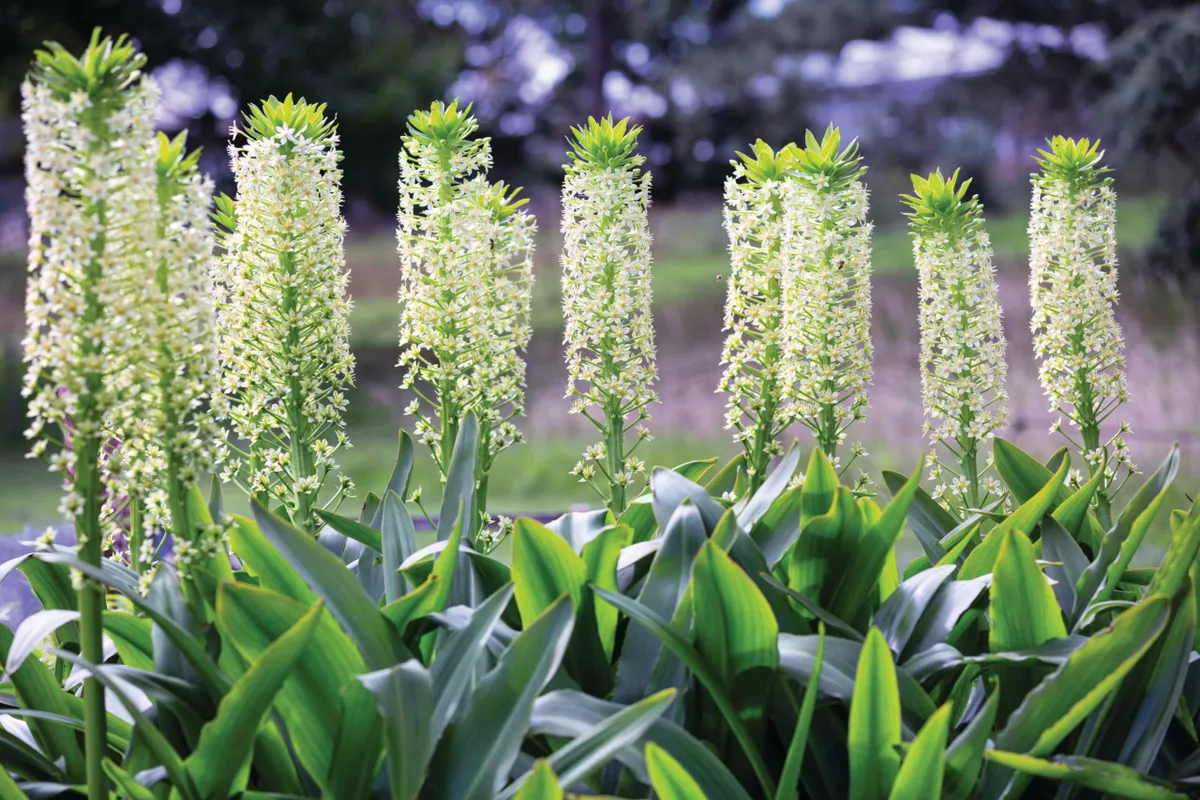
Its large flower columns – composed of small, starry, mother-of-pearl green blooms that culminate in a top-knot of pineapple-like tufts of leaves – shoot up from the centre of large, basal rosettes of long, fleshy leaves. At Sissinghurst Castle in Kent it was planted with Hylotelephium spectabile (then named Sedum spectabile) and Pennisetum alopecuroides, which was a superb and measured combination of colour, texture and form. The bulbs are massive and should be planted with the nose of the bulb just kissing the surface of improved soil that doesn’t sit too wet during colder months.
Height 1.2m. Origin South Africa. Conditions Rich, moist soil; full sun. Hardiness RHS H5, USDA 8a-10b. Season Summer to autumn.
Hylotelephium 'Mr Goodbud'

Great September flowers, with heads that are held in tight clusters, not dissimilar to broccoli, on thick stems above grey-green, succulent foliage. The blooms age to claret and will persist well into autumn. Plant in a sunny aspect in free-draining soil. Protect from slugs, but avoid using pellets – newts and frogs love to bed down among the cold, ice-plant foliage during summer. MR
Height 45cm. Origin Garden origin. Conditions Well-drained soil; full sun. Hardiness RHS H7, USDA 3a-9b. Season Summer to winter.
Persicaria amplexicaulis Taurus (='Blotau')

The range of Persicaria amplexicaulis now available to plant lover's is potentially bewildering. But it you choose to measure performance against reliability, flower colour and longevity this one comes pretty near the top in the rankings. It was a chance seedling, identified by Alan Bloom at Bressingham in Norfolk. Vibrant rose-madder flowers are marginally shorter than the species, and swollen in girth to impressive effect. Individual flowers sport a tuft of electric blue stamens. Extended flowering period is a bonus. MR
Height/spread 100cm x 70cm. Origin Persicarius originate in Northern temperate regions. Soil Prefers a humus-rich, moisture-retentive soil, but copes with less. Season July to October.
Here's our guide on how to grow persicaria
Veronia arkansana 'Mammuth'

Ephemeral detail can ebb and flow but behind every successful border stands a framework of reliable structure plants that endure. Here, stems the thickness of a man's finger reach up nearly two metres without need for support. When September brings golden daisies and wheaten grasses, the flattened heads of Vernonia, each having myriad small composite flowers, stand out in purple splendour. It serves well as fine marker points in formal planting and is equally successful mixed with a range of meadow grasses in wilder spaces. MR
Height/spread 175cm x 80cm. Origin Native to eastern North America. Soil Most well-drained loams in full sun. Season August to October with good structure beyond.
Miscanthus sinensis 'Emmanuel Lepage'

Originally a gift from French nurserymen Monsieur Lepage, this was a chance seedling in his stock beds in the Loire. He selected it for good form and colour and named it after his father. Miscanthus sinensis cultivars contribute reliable height, colour and movement from August to February. This one is particularly valuable retaining fresh green foliage pretty much until Christmas. Prolific flowering stems unfurl to display gently arching plumes with a silken sheen the colour of café au lait. It is a fine partner to Eupatorium cultivars. MR
Height/spread 200cm x 100xm. Origin Miscanthus sinensis species originate in Southeast Asia. Soil Most Moisture-retentive garden loams. Season August to November.
Don't miss our piece on late season grasses
Aster sedifolius 'Nanus'

Front edges of borders, like a pretty smile, get noticed, and unsightly dark spaces in either can be alarming. This slender upright aster is eminently suitable for a front row position, ensuring colour into autumn. Reliable and mildew resistant, it requires little attention. Branched stems support plentiful composite flowers, opening to lavender blue in August. A bonus is the attractive wheaten structure which remains well after flowers fade. ‘Nanus’ was first seen on the stony banks of Lake Baikal in Siberia, where it withstands prolonged harsh winter temperatures. MR
Height/Spread 40cm x 30cm. Origin South and east central Europe to northern Asia. Soil Well-drained loam in an open aspect. Season August to September.
Here's our plant profile on asters
Sedum telephium subsp. ruprechtii

Not every sedum is pink; I like the mellow buff tones of these flowers as a complement to the dark purples and blues of late summer. Newly opened blooms on this more sprawling plant are a creamy yellow, against a glaucous foliage. Long summer days bring on a darkening of flower tone. By the first frosts, flowers have acquired a light biscuit bronze, and foliage is marked with attractive pink flushes. Mixed with Euphorbia polychroma and Stipa calamagrostis in a gravel scree, the cameo endures from May to October. MR
Height/Spread 40cm x 40cm. Origin Widely distributed throughout northern temperate regions. Soil Free-draining garden loam, tolerant of lean nutrient conditions. Season July to September.
Eryngium ebracteatum

At first glance you might easily mistake this plant for a Sanguisorba. Wiry stems bear multiple flowers in warm claret tones, so redolent of the Sanguisorba family. But the fine upright habit and slender saw-edged leaves confirm a tolerance of more arid conditions. Both plants contribute a strong architectural statement in scree or gravel planting. Position where the flower heads can be silhouetted against a late summer sky, and protect from winter wet to preserve the plant for future years. Collect some seed anyway, for added insurance against unpredictable British winters. MR
Height/Spread 100cm x 45cm. Origin South America. Soil Free-draining alkaline to neutral soils. Season July to September.
Here's our plant profile on Eryngium
Persicaria virginiana var. filiformis

As other plants begin to wane, this Persicaria justifies its place in the garden. Principally grown for the velvet textured foliage, its emerald leaves are symetrically marked with an attractive chocolate brown blotch. Wine-red stems repeatedly branch into an airy structure, the terminal wisp of stem so slender it is scarcely visible. Until, that is, tiny flower buds open to reveal a perfect pinpoint of vivid scarlet. MR
Height/Spread 65-80cm x 50cm. Origin Species introduced from America by John Tradescant the younger. Soil Prefers a moisture-retentive soil in light shade, protected from harsh winds. Season Foliage from June, flowers from September.
Don't miss our guide on how to grow persicaria
Crocosmia x crocosmiiflora ‘Star of the East’

This plant presents the perfect example of how a glorious orange flower lift the spirits and brightens a fading border. Coral buds open to star-shaped blooms up to 10cm across, with masses of sword-like green foliage. A triumphant marriage of beauty and resilience and awarded an RHS Award of Garden Merit. ‘Star of the East’ is an Earlham hybrid raised by George Davison who thereafter turned to apple breeding, believing the form could never be surpassed. A confident commendation! MR
Height/Spread 70cm x 35cm. Origin Crocosmia species originated in South Africa. Soil Moisture-retentive loam, preferably not drying excessively in summer months. Season Late August to end September.
Verbena bonariensis ‘Lollipop’

We still sell more Verbena bonariensis than any other plant, but you may not have sampled this diminuitive version and I urge you to investigate. Flattened congested clusters of vibrant purple flowers are held aloft on rigid stems. Longevity of flowering display contributes greatly to its value in feature planters and high profile beds. Used with Erigeron karvinskianus and Molinia caerulea subsp. caerulea ‘Moorhexe’, a large planting trough provided a billowing show of colour and texture from June to November, with almost no watering required. MR
Height/Spread 60cm x 30cm. Origins Species originates from Buenos Aires, after which it is named. Soil Tolerates well-drained thin and lean soils in sunny aspect. Season June until first frosts.
Don't miss our guide to verbena
Ageratina altissima ‘Braunlaub’

Less common than the popular cultivar ‘Chocolate’, but equally as useful in a mixed border, this tall, herbaceous perennial is a wonderful late-summer plant. As it grows, it forms a shrub-like habit that works well as a filler among other plants, but it comes into its own as the summer begins to draw to an end, and masses of white flowers appear throughout the branched stems, illuminating the plant as the evening light starts to recede. It also works well as a cut flower in September. Chosen by Tom Brown
Height 1.5-2.5m.
Origin Garden origin (species from North America).
Conditions Moisture-retentive soil; partial shade.
Hardiness RHS H5, USDA 3a-8b.
Season of interest Late summer into autumn.
Malus x robusta ‘Red Sentinel’

If you’re still searching for the perfect tree for a small garden then it’s worth considering a crab apple. They tick a lot of boxes, not least because they offer a long period of interest. ‘Red Sentinel’ blooms incredibly well in April and May, with a tremendous show of white flowers that are blushed pink. Then from September bauble-like, shiny, red fruits are produced in abundance all over the tree’s canopy. To my amazement, in a wildlife-filled garden, the fruits persist on the branches until Christmas. AGM. TB
Height 4-8m.
Origin Garden origin.
Conditions Moist but well-drained soil; full sun or part shade.
Hardiness RHS H6, USDA 4a-8b.
Season of interest Fruiting in September/October.
Here's everything you need to know about crab apples
Gladiolus ‘Violetta’

If I had to choose just one gladioli, it would be this one. It makes a great cut flower and has rich, sophisticated flowers, of the deepest purple, that are produced from corms in late summer. The delicacy of these dwarf cultivars allows them to grow in borders without the need for staking and clumsy supports, and I adore the way this cultivar’s flowers work well with so many other garden plants in a border or vase without dominating it. Plant from May until July for continuous colour during September and autumn. TB
Height 1.5m.
Origin Garden hybrid (species from South Africa).
Conditions Fertile, free-draining soil; full sun.
Hardiness RHS H3, USDA 7a-10b.
Season of interest Mid to late summer.
Euonymus alatus ‘Compactus’
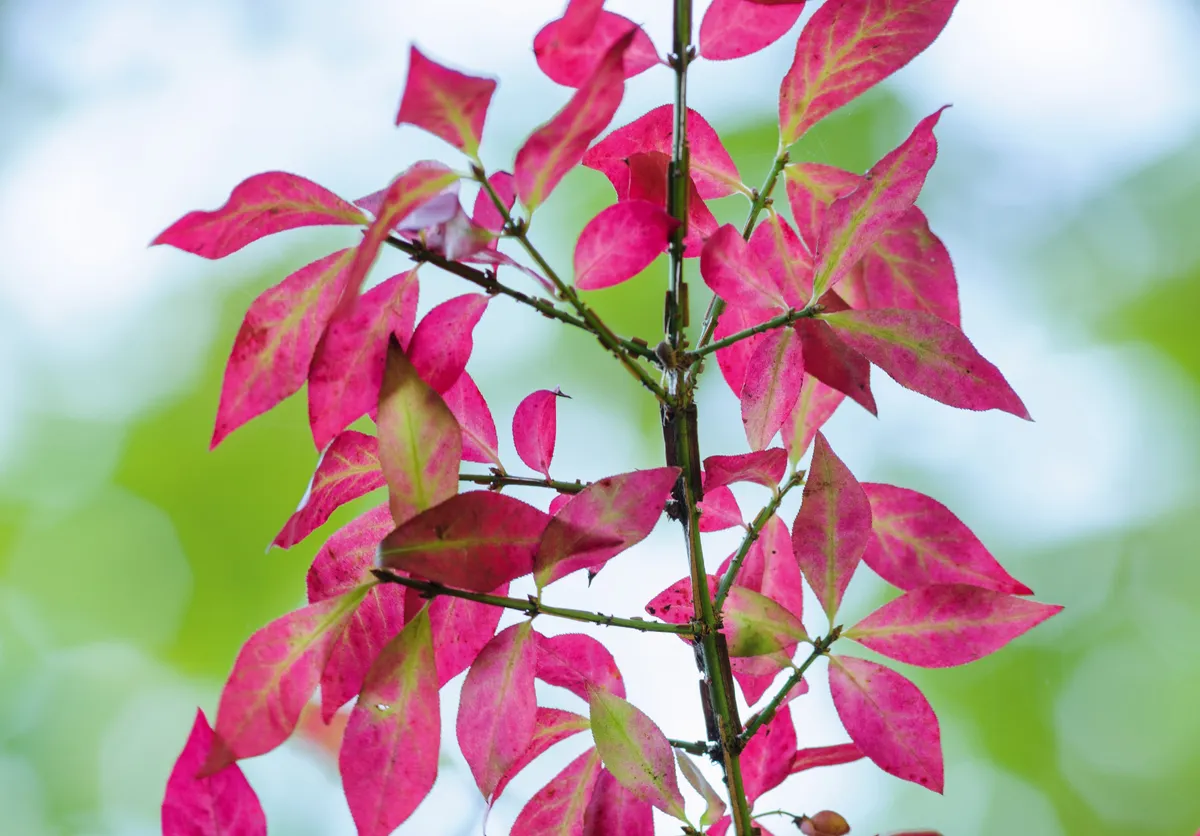
In spring and early summer this is an unassuming plant, but once late-summer evenings start to have a nip of cold about them, this glorious shrub becomes a real attention grabber. Its dense, green foliage turns a rich, claret colour, and this autumn foliage is equally attractive when admired up close or from a distance. Few shrubs can rival this neat cultivar for colour when it is in its autumnal glory. AGM. TB
Height Up to 2m.
Origin Garden origin (species China, Japan, Korea).
Conditions Tolerant of clay and most moisture-retentive soils; part shade or full sun.
Hardiness RHS H6, USDA 4a-8b.
Season of interest Late summer to autumn.
Symphyotrichum novae-angliae ‘Rubinschatz’
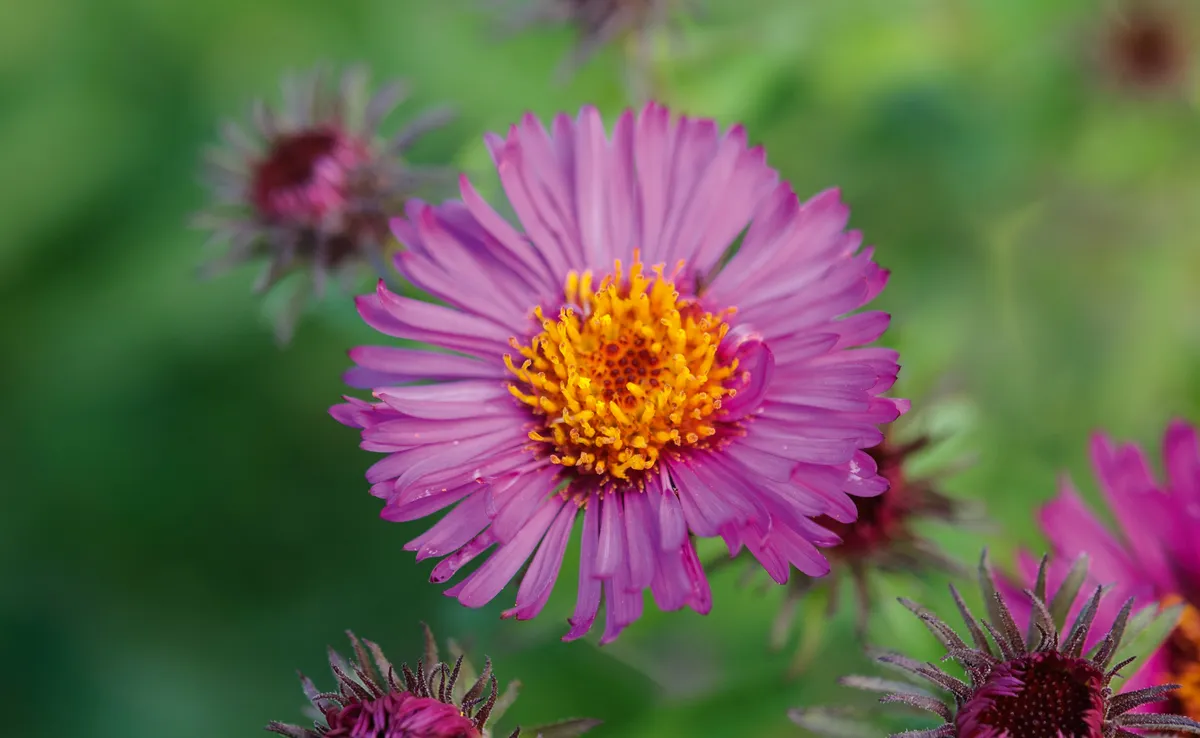
New England asters have a robust nature that I find greatly appealing and admirable. They generally suffer very little from powdery mildew that can affect other asters and produce a reliable show of flowers each year. ‘Rubinschatz’ requires little fuss and attention, I fell in love with the rich, rosy, claret-coloured September flowers, which are most unusual and attractive. Divide every few years to maintain vigour and if cutting, treat the end of the stems with hot water to improve water uptake. TB
Height 1.5-2.5m.
Origin Garden origin (species from Eastern North America).
Conditions Moist but well-drained soil; full sun or part shade.
Hardiness RHS H7, USDA 4a-8b.
Season of interest August – September.
Here's everything you need to know about michaelmas Daisies
Lophospermum erubescens ‘Bridal Bouquet’
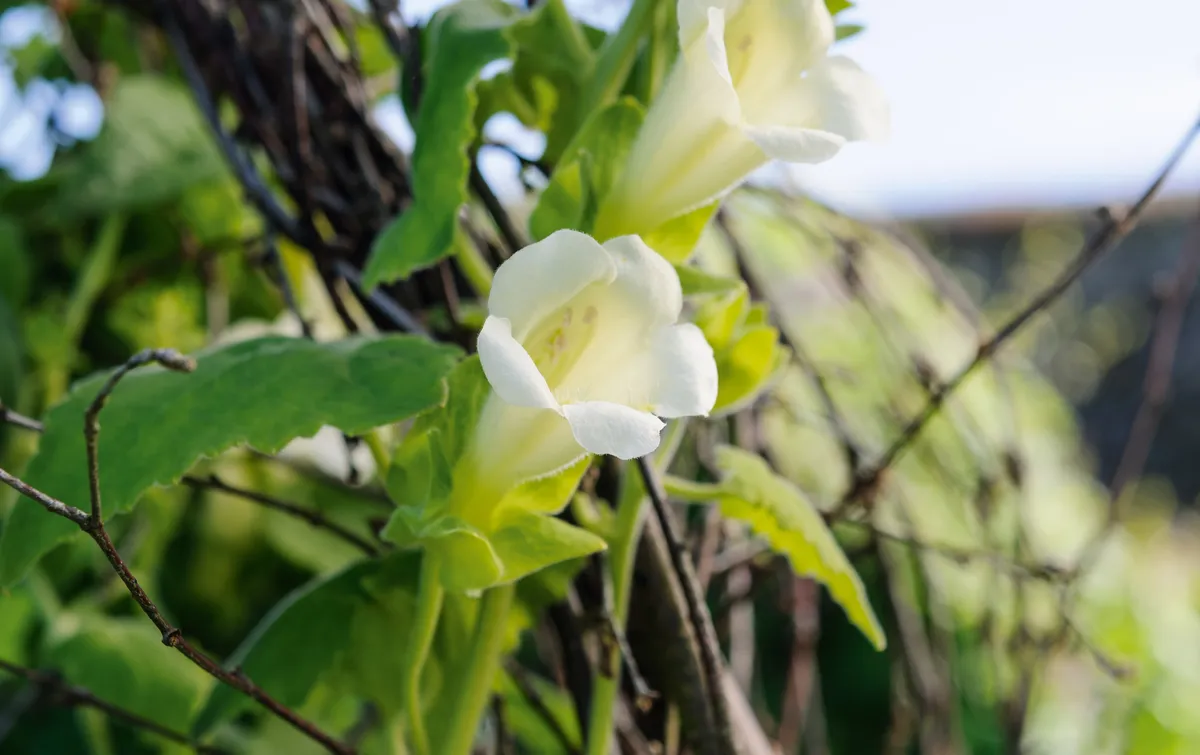
By September, some garden plants are starting to show signs of fatigue after a long summer. Lophospermum, on the other hand, builds as the summer progresses and comes into its own in late summer. Its unusual, pure-white flowers drip from the twining stems and persist until first frosts. It’s happy in a container, where you can manage the feeding regime more closely, and a fortnightly tomato feed is of great benefit for colour. TB
Height 2.5-4m.
Origin Garden origin (species from Mexico).
Conditions Moist, fertile, free-draining soil; full sun.
Hardiness RHS H2, USDA 9a-10b.
Season of interest Late summer until the frosts.
Ipomoea lobata ‘Citrina’
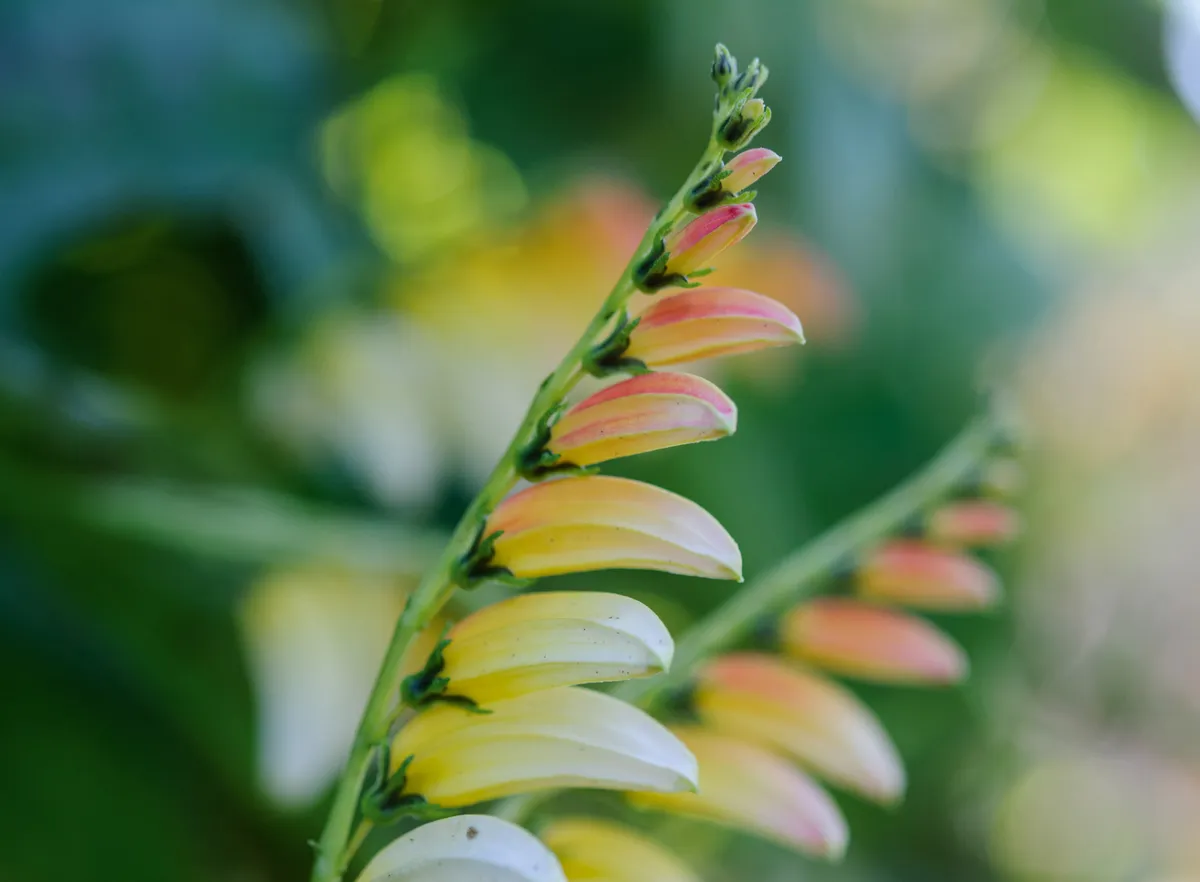
Affectionately known as the Spanish flag, this annual climber is easy to grow and gives beds and borders a much-needed boost of colour at this time of year. Ipomoeas have flame-like flowers that cover twining stems from midsummer, and this cultivar has more subtle, pale-lemon flowers, compared to the species. Like most annual climbers, ipomoeas dislike the cold, so don’t plant out until the warmth of June is fully felt and harvest the ripened seed for next year as the frosts loom. TB
Height 4-8m.
Origin Species from Mexico and Brazil.
Conditions Reasonable garden soil with good moisture retention; full sun.
Hardiness RHS H1C, USDA 11a-12.
Season of interest Midsummer until the first frosts.
Here's a list of other great annual climbers
Cochliasanthus caracalla
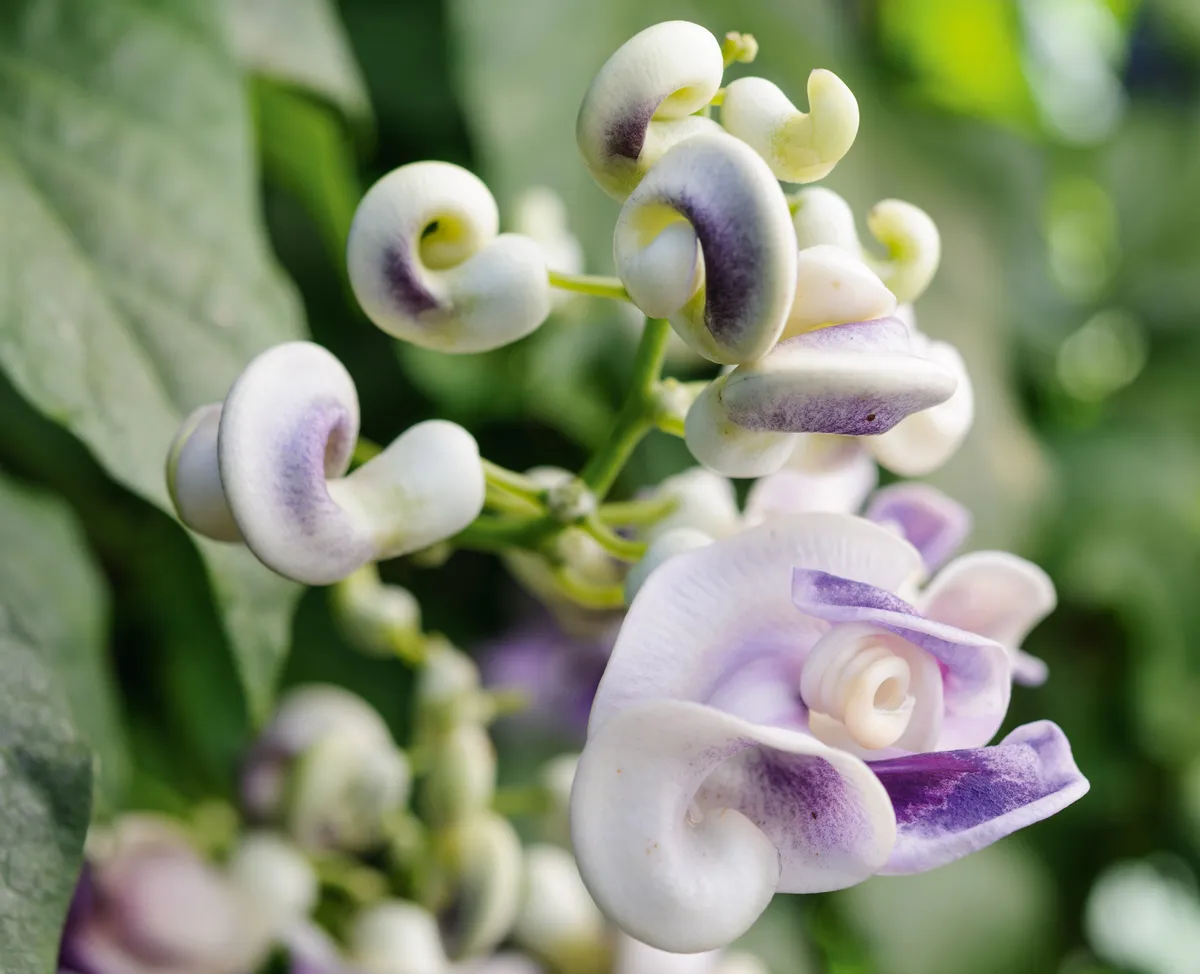
Although I grow this vine each year, from seed, it can be perennial if given a little protection from frosts. Often sold under its previous name of Vigna caracalla it is commonly known as the corkscrew vine on account of its exquisite flowers that are tightly coiled like a corkscrew. Their emergence at the end of the summer always causes great excitement. You can successfully grow it in a container or in a conservatory or in a border, provided you apply a potash-based liquid feed throughout the growing period to encourage a strong flowering. TB
Height 3m.
Origin Tropical South America.
Conditions Moist, free-draining soil; full sun.
Hardiness RHS H2, USDA 10b-12.
Season of interest July – October.
Symphyotrichum ‘Little Carlow’
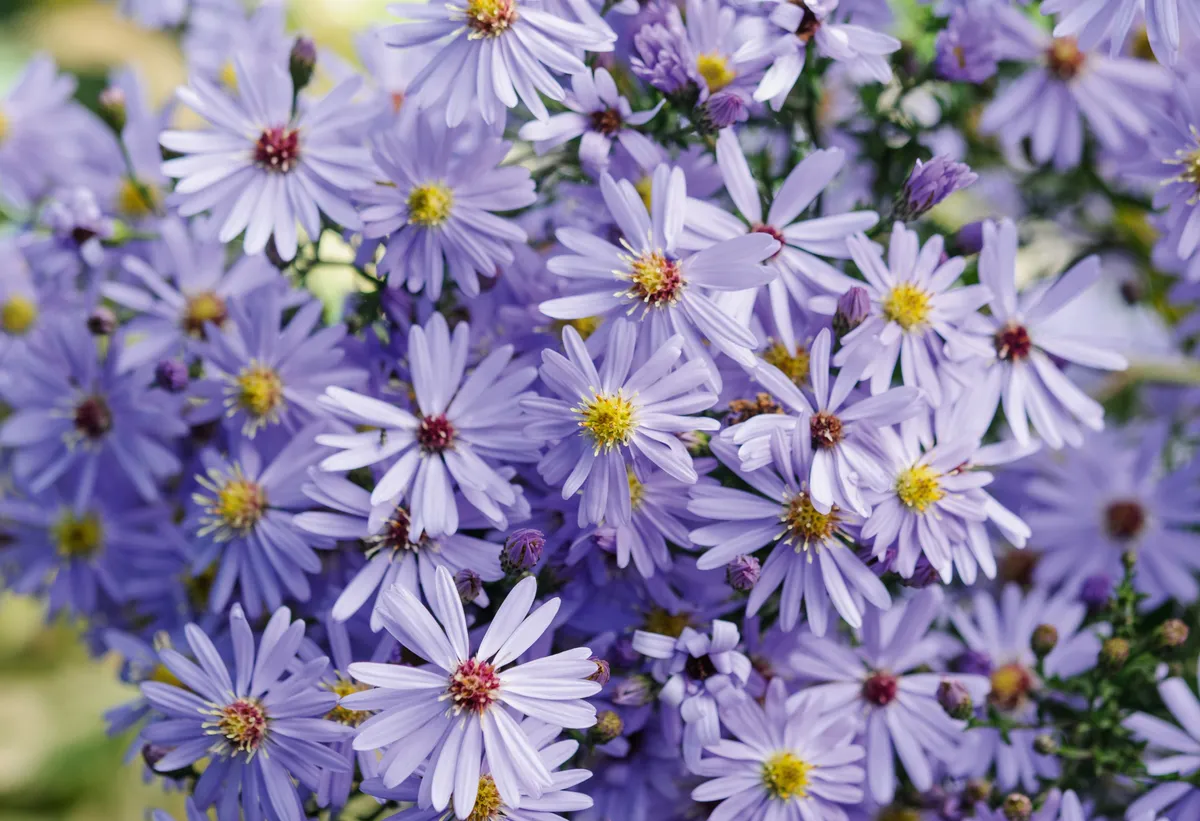
Some Symphyotrichum can be difficult to harmonise with other perennials and shrubs in naturalistic plantings but this much-admired cultivar, with its sprays of soft-blue flowers that appear in abundance in late summer, provides an elegant charm in a number of garden situations, making it one of my favourite flowers. I’d recommend a little birch or hazel to support the plant when it’s in full bloom as the sheer weight of the flowers can overwhelm the wiry stems. AGM. TB
Height 50cm-1m.
Origin Garden origin (species from North America).
Conditions Moist, fertile, free-draining soil; full sun or partial shade.
Hardiness RHS H7, USDA 3a-8b.
Season of interest August – September.
Here's everything you need to know about michaelmas Daisies
Alstroemeria ‘Summer Breeze’
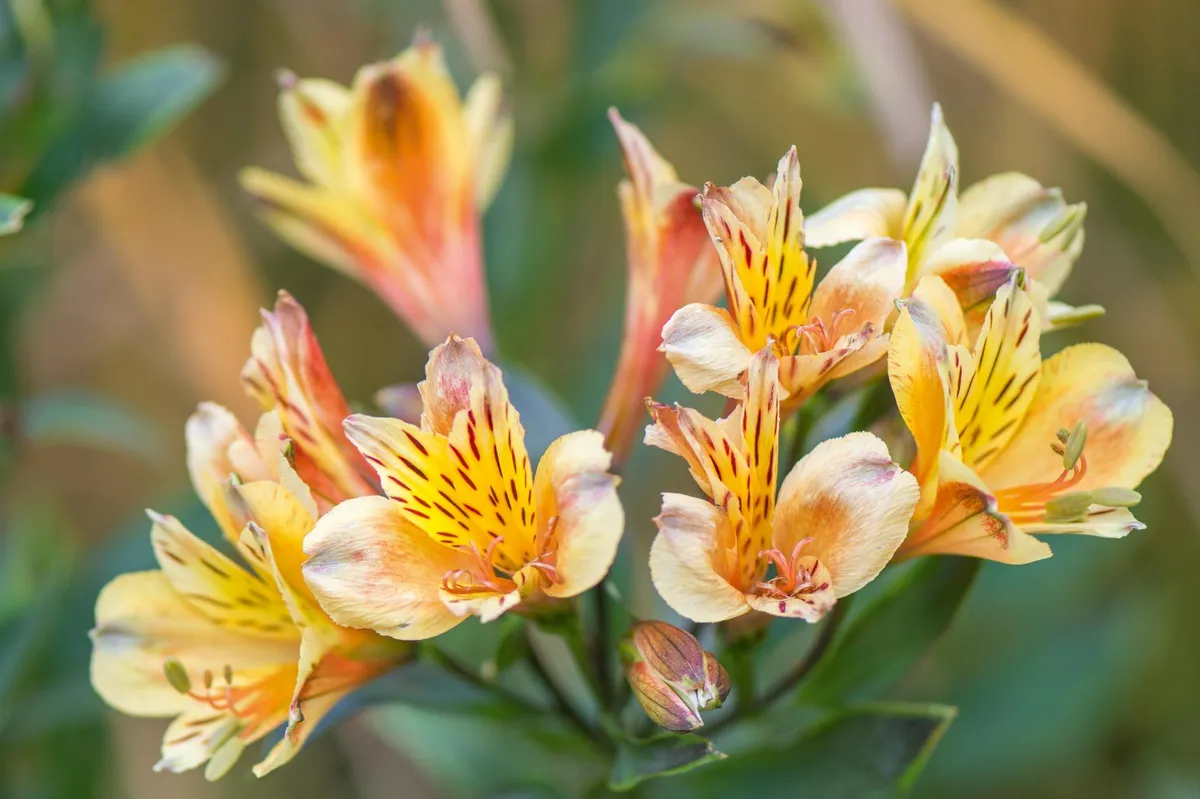
Dutch breeders of cut flowers are always trying to develop stronger and longer-flowering blooms. Occasionally, some of the plants they come up with are ones that also work exceptionally well in a garden setting. This alstroemeria with its slightly striped, dark bronze-coloured leaves and marbled red, orange and yellow flowers is just such a plant. In the garden it loses its regulated growth and can reach a height of around 80cm. It flowers for an exceptionally long time adding an exotic-looking touch of summer heat to September borders. Chosen by Fleur van zonneveld
Height 80cm. Origin Garden origin (species Chile). Conditions Moist but well-drained soil; sun and part shade. Hardiness RHS H4. Season of interest Summer to autumn.
Phlox paniculata ‘Natural Feelings’

What a bizarre-looking phlox this is. I sometimes think ‘Unnatural Feelings’ might have been a better name, as it’s not at all what you’d expect from a Phlox paniculata. The panicles – which are composed of red-pink flowers with a centre of pale-green petaloid stamens – look like wrinkled little umbels, made out of small, paper pouches. Despite its unusual appearance, it is a good and healthy grower, and the panicles last for several months making it a striking and civilised addition to you border of September flowers. FvZ
Height 80cm. Origin Garden origin (species North America). Conditions Moist but well-drained soil; full sun to part shade. Hardiness RHS H7, USDA 4a-8b. Season of interest Mid to late summer.
Sanguisorba canadensis

Sanguisorba is a genus we love a lot. It creates a wonderful feel of airiness and looseness in naturalistic plantings, and this tall, white burnet adds a wonderful airy feel, especially when grown en masse as the late-flowering spikes tend to appear one by one – and a mix of opened and unopened flowers looks fabulous. We grow it alongside the even taller, dark-red Sanguisorba ‘Cangshan Cranberry’, which we got from Graham Gough at Marchants Hardy Plants, the dark-pink Sanguisorba menziesii and our own selection the red Sanguisorba officinalis ‘Rock and Roll’. A winning combination of September flowers. FvZ
Height 1.5m. Origin North America. Conditions Moist but well-drained soil; full sun to part shade. Hardiness RHS H7, USDA 4a-8b. Season of interest Summer to autumn.
Don't miss our guide on how to grow sanguisorba
Persicaria amplexicaulis ‘Black Adder’

This relatively short persicaria is characterised by its large, thick, dark-red spikes that bow deeply after a rain shower. It’s a selection from the Belgian breeder and persicaria expert Chris Ghyselen, who seems to delight in creating the chunkiest possible flowers. We like to combine striking persicarias, such as this, with a spectacular phlox, such as Phlox paniculata ‘Eva Foerster’, which makes an intense and unlikely, almost kitsch, combination. So exciting and highly recommended. Definitely, one to try for yourself in September. FvZ
Height 70cm. Origin Garden origin (species Himalayas). Conditions Moisture-retentive soil; full sun to part shade. Hardiness RHS H7. Season of interest Summer to autumn.
Here's our guide on how to grow persicaria
Berberis thunbergii f. atropurpurea ‘Rose Glow’
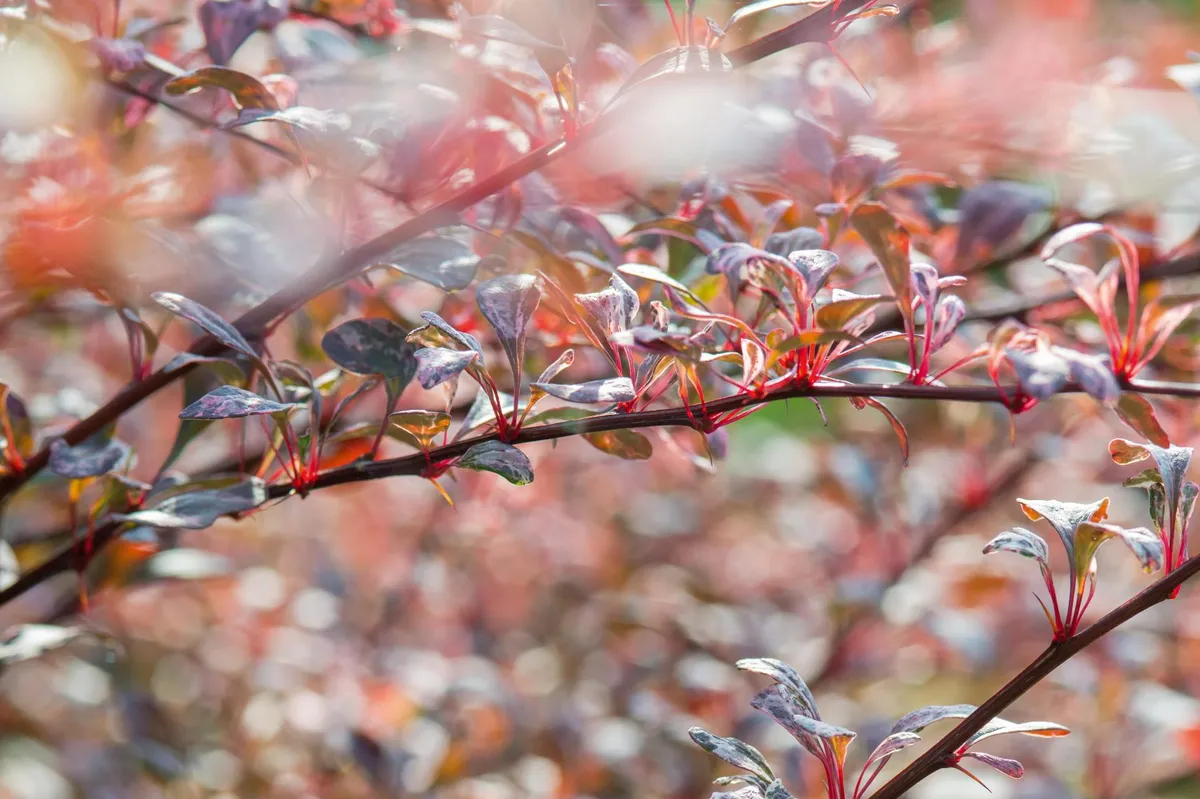
In the Netherlands, where Berberis thunbergii is often planted in public parks, many garden enthusiasts actively dislike these thorny bushes, considering them merely a municipal plant. But, if pruned just once early in the year, this cultivar rewards you with pronounced spotted red leaves, and when neatly pruned into a dome shape is a great addition to the border in September. Even in winter its filigree habit adds structure between the skeletons of spent perennials. FvZ
Height 1.5m. Origin Garden origin (species Japan). Conditions Well-drained soil; full sun to part shade. Hardiness RHS H7, USDA 4a-8b. Season of interest Year round.
Begonia grandis subsp. evansiana var. Alba

I like begonias mainly for their asymmetrical leaves and their long flowering period, but if, like this one, they are also hardy, then all the better. Sometimes, when I’ve grown this particular one in a pot, I’ve thought that it might not have survived the winter, as often it can be hard to see if it is still there or not until June. Then all of a sudden, it comes to life in all its glory. It has delicate, white flowers and the undersides of the leaves are burgundy coloured. It even grows on dry, shady ground. FvZ
Height 50cm. Origin China, Japan. Conditions Well-drained soil; part shade. Hardiness RHS H4, USDA 6a-9b. Season of interest Summer to autumn.
Allium wallichii
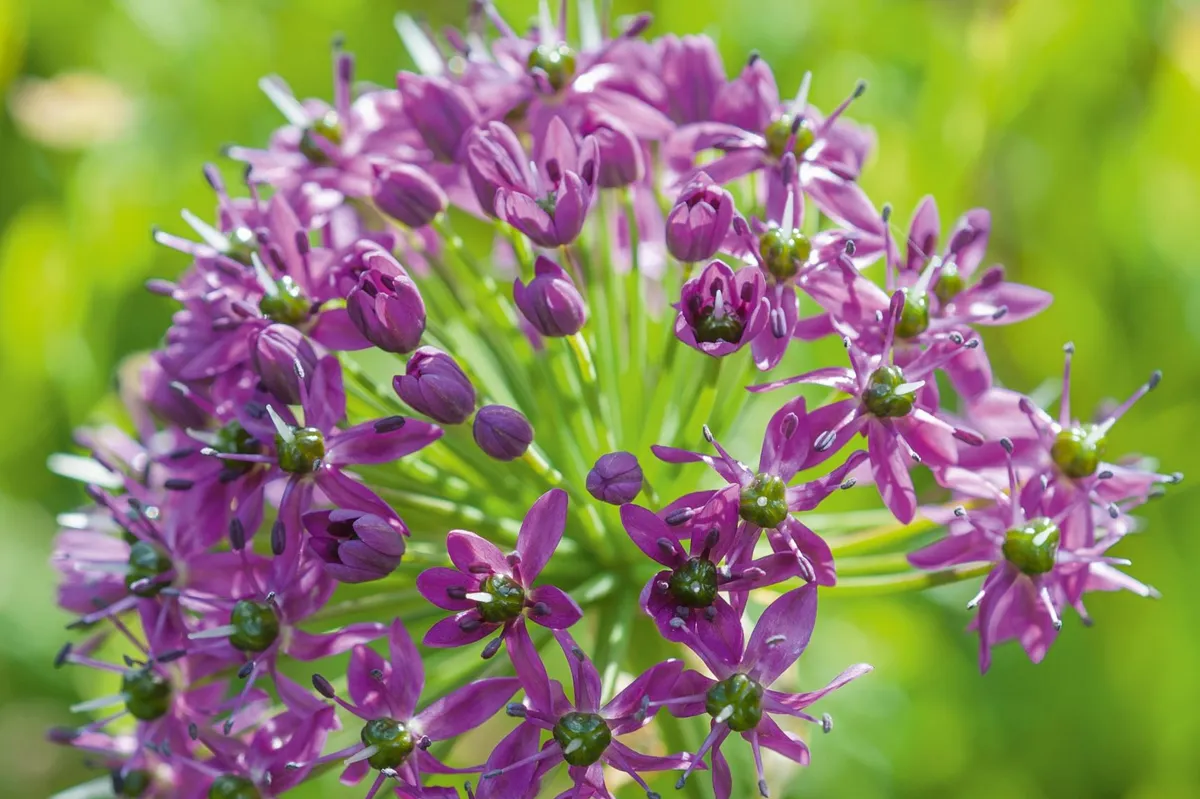
Allium wallichii is something of an oddity among the extensive Allium genus, which includes more than 600 species. It comes from the Himalayas, where it grows from bulbils produced at the end of stolons at altitudes of more than 2,000m in relatively damp meadow. It flowers in late summer – from August to October – and doesn’t start into growth until late spring, with its leaves beginning to die back at a similar time to the early blooming alliums. It’s a purple-pink colour with large, round umbels, made up of fine, star-shaped flowers. FvZ
Height 45cm. Origin Himalayas, southwest China. Conditions Moist soil; full sun to part shade. Hardiness RHS H7. Season of interest Late summer to autumn.
Here's our guide on how to grow allium
Vitis vinifera ‘Purpurea’
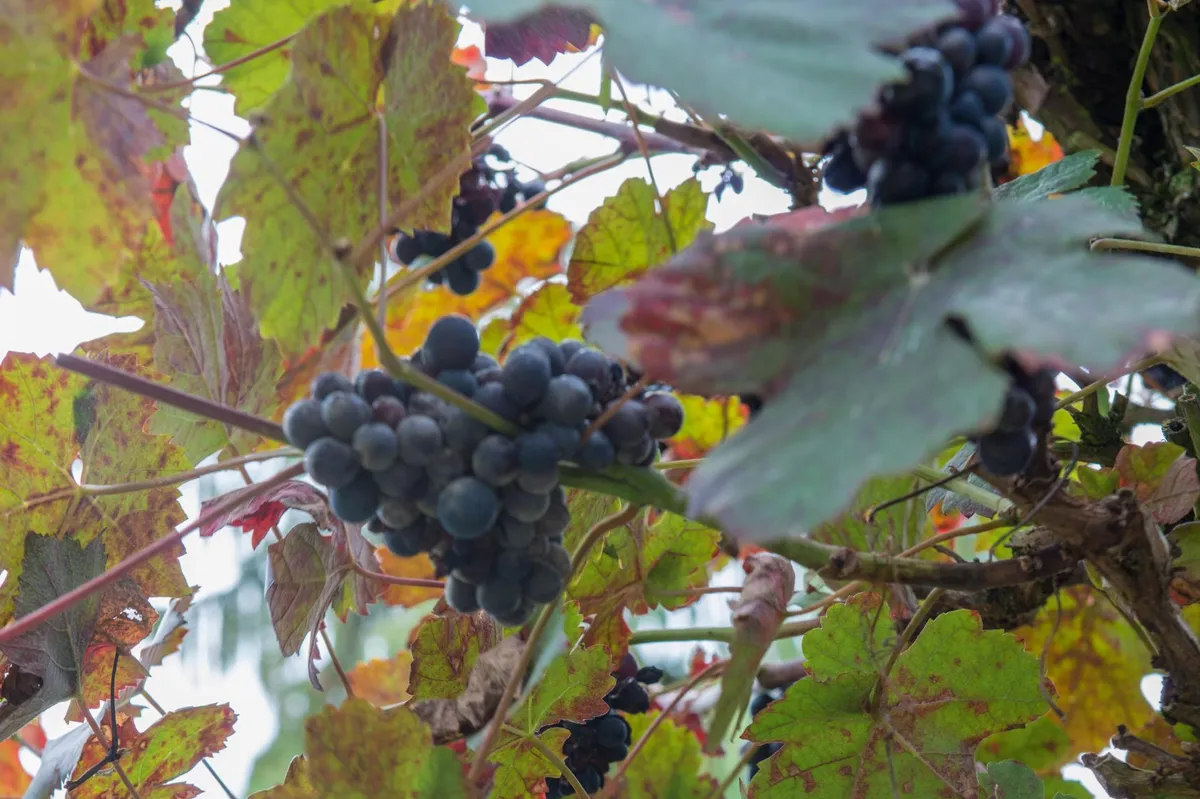
We love purple-coloured leaves – and while there is a wealth of red-leaved perennials, annuals, trees and shrubs to choose from there are fewer options when it comes to climbers. Essentially the choice is between a single Clematis montana and this Vitis vinifera, which has lobed leaves that are purple-tinted in summer and turn a richer plum colour later in autumn. The leaves are beautiful, but the grapes are not particularly worth picking – even birds reject them – but they will hang on a wall or pergola until December. AGM. FvZ
Height 8m. Origin Garden origin (species central and southern Europe). Conditions Well-drained soil; full sun to part shade. Hardiness RHS H6. Season of interest Summer to autumn.
Here's the best climbing plants
Helenium ‘Little Orange’
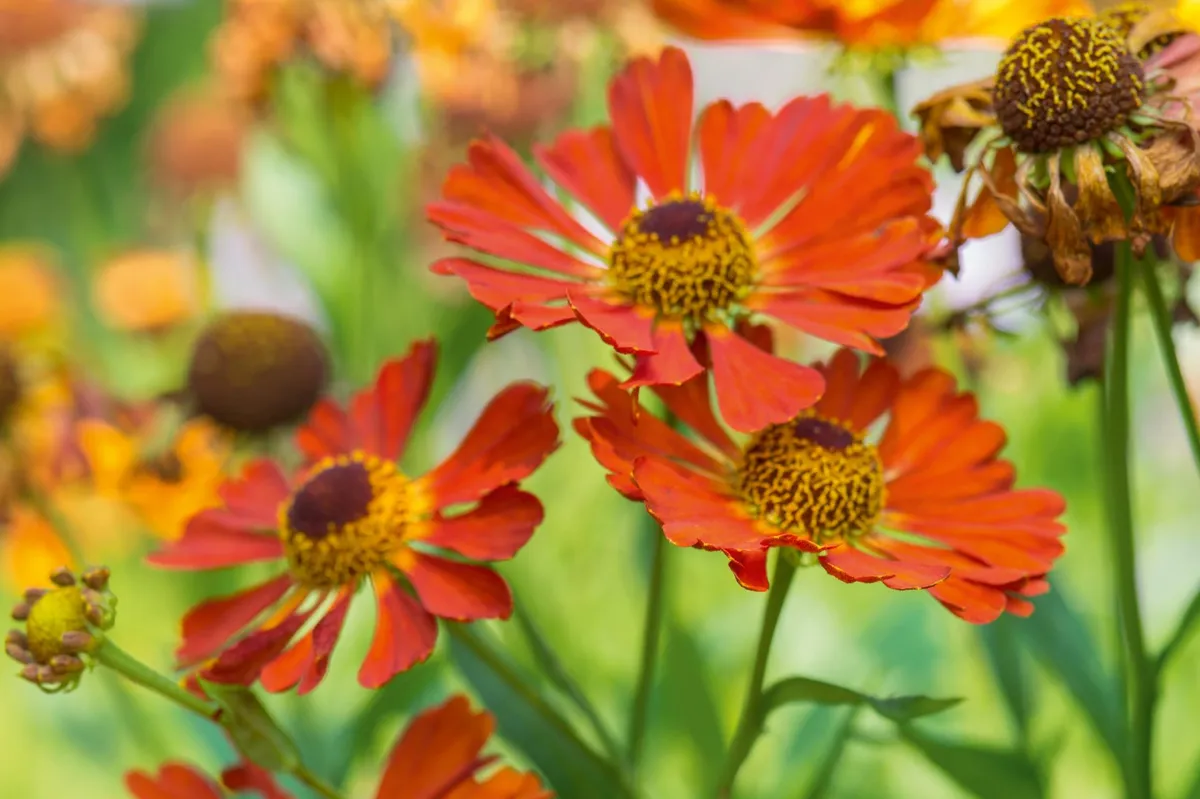
Heleniums always brighten late summer. Their firmness, health and warm red-brown to yellow colour makes them highly appealing. Many grow up to 1.5m, but this warm-orange cultivar selected by the Dutch breeder Henk Jacobs in 2007 is very short. Henk found the seedling growing among grasses and calls it a ‘gift from the garden’. We have to agree. It has all the characteristics you would want from a helenium and the fact it is so low-growing makes it even more attractive. Occasionally, yellow flowers pop up, adding an extra element of fun.
Height 70cm. Origin Garden origin (species North America). Conditions Moist but well-drained soil; full sun. Hardiness RHS H6. Season of interest Summer to autumn.
Verbena officinalis var. grandiflora ‘Bampton’
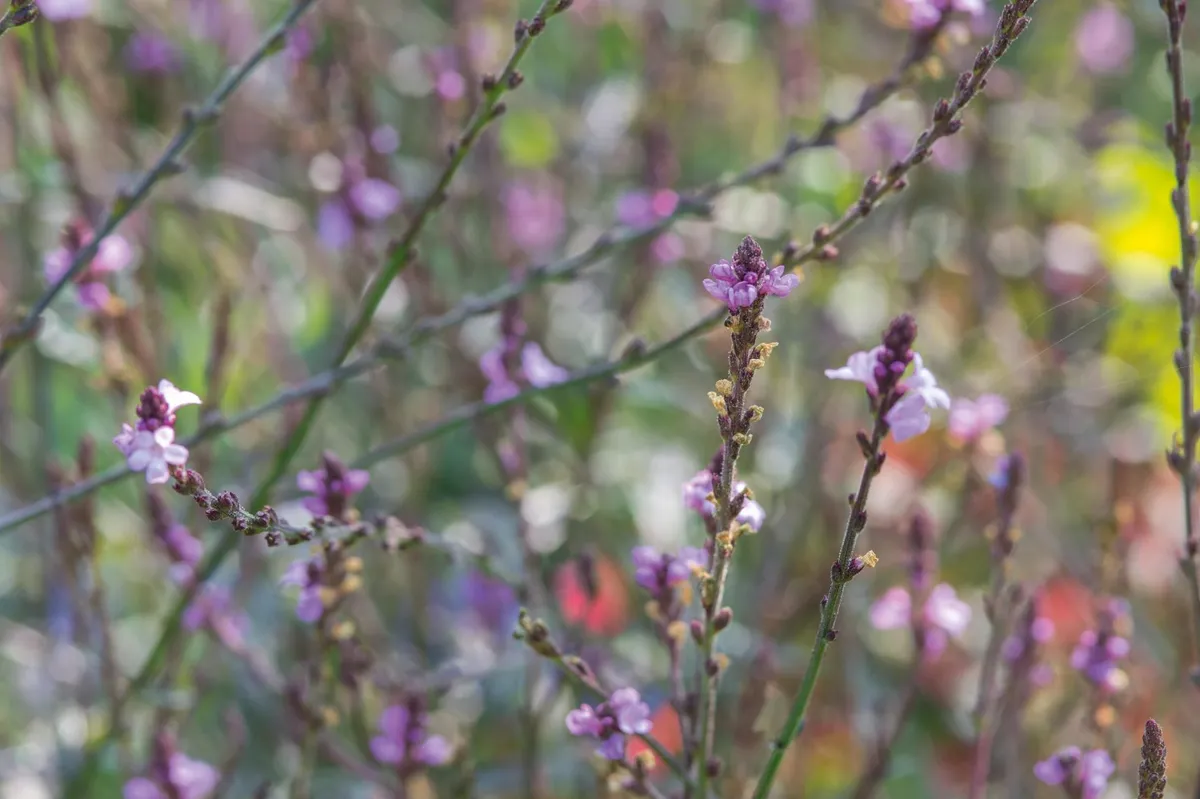
Some people find that this verbena self-seeds as voraciously as the better-known Verbena bonariensis. Although this can create a lot of extra work, we think this long-flowering verbena with its loose habit and purple leaves is worth the trouble. It is the perfect filler for an empty spot with neutral, soft- lilac spikes that actually fit everywhere even in pots. In the winter it dries to a sturdy skeleton with ornamental value. Always leave the darkest coloured seedlings, otherwise the colour of the leaves becomes lighter. FvZ
Height 60cm. Origin Garden origin (species Europe). Conditions Well-drained soil; full sun to part shade. Hardiness RHS H6. Season of interest Summer to winter.






